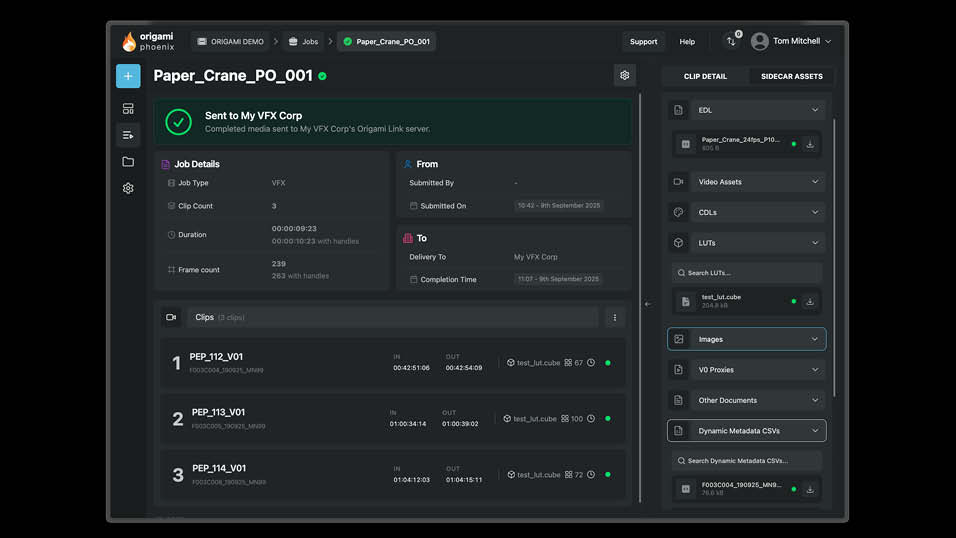In today’s fast-paced digital landscape, efficiency is paramount for small to medium-sized businesses (SMBs) operating in creative industries such as film, TV, and VFX. The emergence of automation tools presents a crucial opportunity for these businesses to streamline their workflows and significantly enhance productivity. By leveraging platforms like Origami, Make, or Zapier, SMB leaders can create tailored solutions that optimize resource management and reduce operational bottlenecks.
Traditionally, creative workflows have been hindered by fragmented systems and manual processes. The intricacies of managing media files, metadata, and collaborative tasks often lead to costly delays and increased workloads for creative teams. By embracing automation, businesses can mitigate these challenges and unlock the potential for smoother operations. To help you navigate this transformative journey, let’s explore a step-by-step approach for implementing automation tools to streamline workflows effectively.
The first step in adopting automation is identifying the areas where manual processes are most time-consuming. This could involve reviewing existing workflows and pinpointing repetitive tasks that consume valuable resources. Once these areas are identified, the next step is selecting an appropriate automation platform. Tools like Zapier and Make are excellent choices for SMBs, as they offer user-friendly interfaces and can integrate with a wide variety of applications relevant to creative work.
After selecting a platform, businesses should define clear objectives for automation. This may include streamlining media management, improving data integrity, or enhancing collaboration among teams. For instance, in a film production pipeline, you could automate the ingestion of metadata from .ale files. By doing so, you eliminate manual entry points that are not only error-prone but also time-consuming. To implement this using Make or Zapier, create a workflow that connects your storage system with the desired metadata source, automating the transfer and formatting of data as needed.
Next, it’s essential to harness the power of AI within automation tools. Many platforms offer AI-driven capabilities that can enhance decision-making and increase efficiency. For example, consider utilizing AI for automated colour confidence checks. In VFX workflows, having color accuracy is crucial. You could set up a workflow that automatically generates preview plates with LUT/CDL applied, ensuring that colour grading is consistent across different versions. This process not only boosts efficiency but also reduces the risk of discrepancies in the final output.
As you develop these workflows, it’s important to thoroughly test them to ensure they operate as intended. Create a set of test cases that simulate real-world scenarios, allowing you to verify that the automation functions correctly and meets your objectives. Platforms like Origami, with their focus on cinematic workflows, provide robust testing environments that let you refine your processes before rolling them out on a larger scale.
Additionally, consider integrating third-party storage solutions into your automated workflows. With the introduction of features like Third-Party S3 Support, you can expand your connectivity beyond traditional providers such as AWS, incorporating options like Wasabi or Backblaze. This ensures that all your data — whether on-premises or cloud-based — is accessible through a unified interface, driving greater collaboration and allowing teams to operate more cohesively across different platforms.
While the viability of automation can yield significant returns on investment, it’s crucial to be aware of the potential risks involved. Integration complexities, data security concerns, and the initial costs of setting up automated processes must be carefully managed. To mitigate these risks, follow best practices for project management, including regular monitoring and updates to your workflows. Establish clear protocols for accessing and managing sensitive information, especially when dealing with cloud services.
Finally, ensure that your team is on board with these changes. Take time to provide training on automation tools and how they can enhance current workflows. Encourage feedback from team members, as they can offer valuable insights that could lead to further optimizations. Engaging your team in the process will facilitate smoother adoption and increase overall satisfaction with the changes.
In summary, automation provides a practical solution for SMBs in the creative industries to achieve greater efficiency and scalability without sacrificing flexibility. By following this step-by-step approach and harnessing the capabilities of modern tools like Origami, Make, or Zapier, businesses can streamline their workflows, improve collaboration, and stay competitive in a challenging marketplace. The significant benefits of improved productivity, reduced errors, and lower operational costs can dramatically enhance a company’s bottom line.
FlowMind AI Insight: Embracing automation is not just about improving efficiency—it’s about strategically positioning your business to adapt to future challenges. By investing in automation now, SMB leaders can foster a culture of innovation, ensuring their teams remain agile and responsive in an ever-changing landscape.
Original article: Read here
2025-09-11 05:04:00

